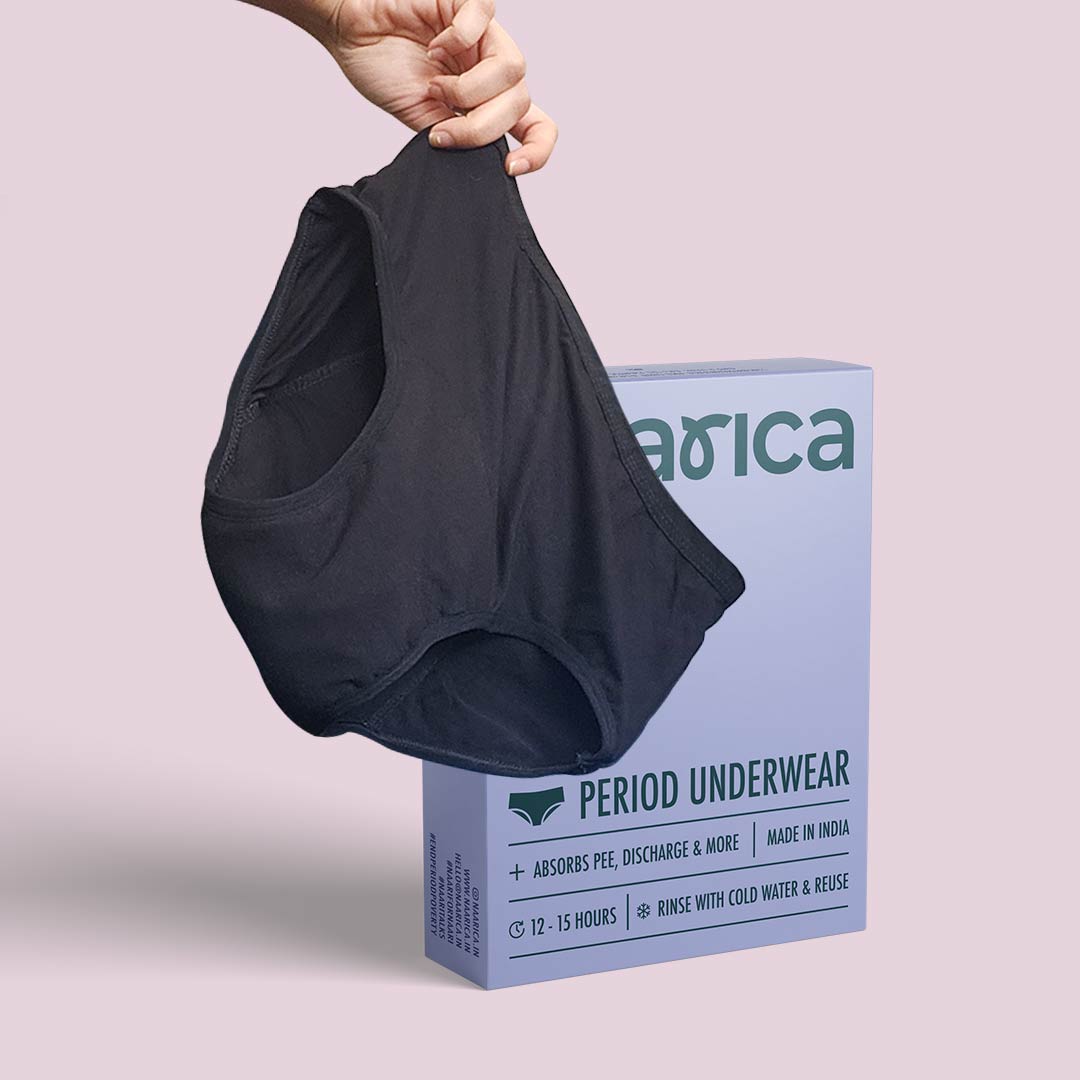Mood swings, aches and pains, stress, uncontrollable hunger pangs... As soon as they reach childbearing age, women often suffer from various disorders of varying intensity each time they're about to menstruate. Essentially caused by hormonal fluctuations linked to menstrual cycles, premenstrual syndrome can lead to truly disabling symptoms on a daily basis.
This is the time when period panties are most useful, because they're soft, easy to wear, and help anticipate the little stain that arrives without warning. In any case, there are solutions to alleviate them, but let's start by trying to understand why menstruation sometimes hurts even before it happens.
What is premenstrual syndrome?
This term covers the various symptoms that occur some time before menstruation. It generally begins in the 7 to 2 days before menstruation, and disappears with the onset of menstruation, or a few days afterwards.
Around three quarters of fertile women experience premenstrual syndrome, with mild symptoms (uterine cramps, breast pain that remains bearable...). This does not prevent them from pursuing their usual activities. On the other hand, around 30% of women who are about to menstruate suffer from more troublesome symptoms.
The symptoms of this syndrome are sometimes confused with those of depression or premenopause. It is therefore important to establish that the disorder is really linked to the menstrual cycle, that it has recurred before menstruation during the year, and that it disappears completely for at least one week a month. Cases of spotting have no bearing on it, and the consistency of menstrual blood has no direct correlation. It is only after examining the various symptoms and their occurrence that this syndrome is diagnosed.
Symptoms and causes of premenstrual syndrome
Here are the most common symptoms affecting women suffering from this syndrome:
- Emotional disorders, manifesting as mood swings, irritability, aggressiveness, nervousness, hypersensitivity or even depression;
- Periods and headaches, such as headaches or migraines of varying severity;
- Sleep disorders (insomnia or hypersomnia);
- Decreased libido;
- Breast swelling and tenderness, heavy legs and bloating, weight gain, swollen lower abdomen... all due to water retention;
- Skin disorders (acne);
- Appetite disorders;
- Muscle pain, especially in the lower back etc.
What to do about premenstrual syndrome?
There are natural solutions to relieve the pain that appears before your period. Remember to massage the affected area regularly to promote circulation. If the area is very swollen and hurts (the breasts, for example), you can try slipping a towel filled with ice cubes over it. For lower abdominal cramps and other stomach aches, hot water bottles can help, as can certain postures such as the candle. This involves lying on your back and then raising your legs vertically into the air.
Other remedies can help you fight the pain. Flat-leaf parsley can reduce tummy aches, while evening primrose and borage relieve tense breasts. As a preventive measure, remember to eat dairy products and foods rich in vitamins (vitamin E, in particular). Soya is reputed to reduce hormonal disorders, and is rich in calcium. Homeopathy is also a solution.
Risk factors and age-related changes
Some women are more susceptible to premenstrual syndrome. If you have a mother or sister who suffers from the condition, chances are you will too. Other factors can aggravate symptoms: smoking, as well as excessive consumption of alcohol, caffeine and stimulants. A sedentary lifestyle, obesity, lack of sleep and calcium deficiencies also increase the risk of being affected. Finally, stress will also contribute to increasing the intensity of symptoms.
The physical and psychological manifestations of the syndrome also vary from age to age (as does their flow: very heavy vs. moderate periods). Unpleasantness is generally more pronounced after puberty and during the twenties, due to hormonal changes. By the age of 30, with the onset of motherhood, many women experience an easing of their symptoms. Thanks to the production of prolactin, which prevents menstruation for a certain period, breastfeeding can help young mothers temporarily get rid of premenstrual syndrome (not to be confused with Toxic Shock Syndrome).
Otherwise, in general, as the body undergoes transformations, the pain diminishes considerably, except for women who have taken the pill. The transitional phase between stopping contraception and pregnancy can be difficult. After the age of 40, and as menopause approaches, problems may return with a vengeance, due to the hormonal imbalance that precedes the disappearance of menstruation.







